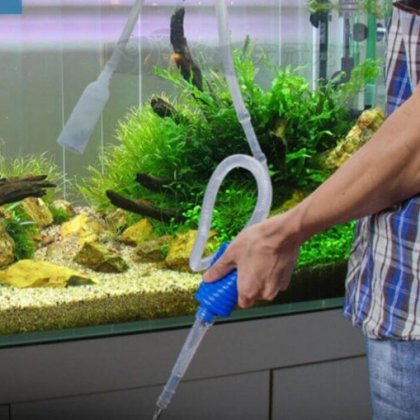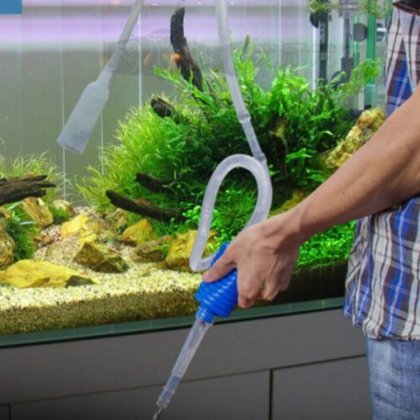|
Quick Facts :: Black Veil Angel |
|
|
Care Level: |
Moderate |
|
Temperament: |
Semi-Aggressive |
|
Maximum Size: |
6" |
|
Minimum Tank Size: |
30 Gallons |
|
Water Conditions: |
75-82° F, KH 1-5, pH 5.8-7.0 |
|
Diet: |
Omnivore |
|
Origin: |
South America |
|
Family: |
Cichlidae |
|
Species: |
Angelfish |
|
Aquarium Type: |
Community |
Black Veil Angel Aquarium Care, Feeding and Native Habitat Information
The Black Veil Angel hails from the warm temperate waters of the Amazon basin in South America, where it is found in calm waterways and flood plains. Black Veil Angels are found living in areas with losts of plants or tree roots, which they use for protection against larger fish species and as a place to hunt insect larvae and other foodstuffs. These days this species is more commonly tank bred in the United States and parts of Southern Asia, than collected from the wild. They have long been sought after in the aquarium hobby because of their brilliant black body coloration and long flowing fins. Their long fins mean that they should not be kept with fish species that will nip or tear their fins. Many "fin nipping" species can be kept easily with angelfish as long as the "fin nippers" are kept in groups of 4 or more, so that they will nip at each other and ignore the angelfish. In a small or medium sized aquarium the Black Veil Angel is best kept in a mated pair, in larger aquariums they can be kept in groups of 6 or more individuals.
Black Veil Angelfish will do well in aquariums that are 30 gallons or larger and have plenty of plants and/or driftwood. As a group freshwater Angelfish are territorial and will squabble with one another until a dominant male is established. They can be kept singularly, in mated pairs or in medium sized groups of 6 or more. Contrary to popular belief, long finned species like the Black Veil Angelfish can be kept with barbs and other "fin nipping" species. The key here is that the barbs be kept in proper sized groups, so that they nip at each other instead of nipping at the Angelfish or other species that are not equipped for this type of behavior. Barbs prefer to be kept in groups and their nipping at each other is normal behavior that will not hurt them at all; however, this behavior is too boisterous for many other fish species and damaging to long finned fish species. Angelfish in general require fairly constant water parameters and are less forgiving than many other freshwater community species towards fluctuations in pH or temperature. Like with most South American cichlid species, the Black Veil Angelfish prefers soft, slightly acidic water with temperatures that stay between 79 and 83 degrees.
The Black Veil Angelfish is an omnivore and should be fed a variety of foods including vegetables as well as meaty foods. Feed a quality flake food as well as live and frozen foods such as brine shrimp, bloodworms and tubfex worms. They are particularly fond of bloodworms and it is even believed that feeding Angelfish bloodworms will help stimulate breeding behavior.
No reviews found!





























No comments found for this product. Be the first to comment!